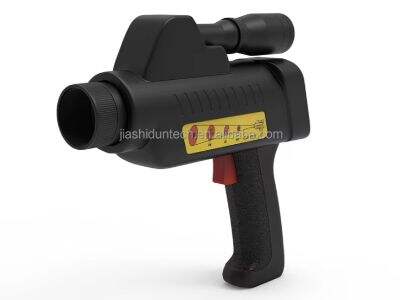একটি তাপমাত্রা সেন্সর কিছুটা একজন ছোট ডিটেকটিভের মতো, যা আমাদের সাহায্য করে জানতে কোন জিনিস কতখানি গরম বা ঠাণ্ডা। আমরা ঘরে, গাড়িতে এবং আঁকাশের মধ্যেও তাদের দেখতে পাই। পরিমাপের তত্ত্বের উপর ভিত্তি করে, তাপমাত্রা সেন্সরকে দুটি গ্রুপে ভাগ করা যায়: অনুভাগীয় এবং সংস্পর্শী তাপমাত্রা সেন্সর।
আইনফ্রারেড সেন্সর
উপায় আইনফ্রারেড তাপমাত্রা সেনসর কাজটি হল তারা অনুভাগীয় বিকিরণ হিসাবে বস্তুগুলি থেকে বেরিয়ে আসা তাপ লক্ষ্য করে। তারা কিছুটা একটি অতি বিশেষ চশমার মতো, যা আমাদের কিছু ছুঁয়ার প্রয়োজন না হওয়ার মধ্যেই দেখতে পাওয়া যায় কিভাবে জিনিসগুলি গরম।
যোগাযোগ সেন্সর
সংযোগ তাপমাত্রা সেন্সর কিছুর সাথে সরাসরি যোগাযোগ করে তাপমাত্রা মাপে। এটি স্পর্শ করে দেখে যে তা গরম না ঠাণ্ডা।
আইনফ্রারেড বনাম সংযোগ তাপমাত্রা সেন্সর
এই দুটি সেন্সরের মধ্যে প্রধান পার্থক্য কি? চলুন জেনে নেই।
আইনফ্রারেড সেন্সর: এই সেন্সরগুলি তাপমাত্রা দূর থেকেও অনুভব করতে পারে। তারা গ্রিলের উপর খাবার বা কারখানায় যন্ত্রপাতির তাপমাত্রা নিরাপদ দূরত্ব থেকে মাপতে পারে।
সংযোগ সেন্সর: এই ধরনের সেন্সর সরাসরি স্পর্শ করা যায় তেমন জিনিসের তাপমাত্রা মাপতে ভালো কাজ করে — আপনার চামড়া, বলতে পারেন, বা এক গ্লাস গরম কোকো।
আমরা যে সকল জায়গায় ইনফ্রারেড কনট্যাক্ট টেমপারেচার সেনসর ব্যবহার করি
অনেক অ্যাপ্লিকেশন রয়েছে যেখানে উভয় ইএর এবং কনট্যাক্ট টেমপারেচার সেনসর ব্যবহৃত হয়। ইনফ্রারেড সেনসর ফ্যাক্টরিতে, খেতে এবং হাসপাতালে সাধারণ। তারা যোগাড় করতে পারে যন্ত্রের, ফসলের এবং কেউ জ্বর আছে কিনা তা পরীক্ষা করতে ব্যবহৃত হয়।
তারা পরিচিত বস্তুগুলির মধ্যে রয়েছে ওভেন, থার্মোস্ট্যাট এবং শিশুদের বোতল। তারা জিনিসগুলি ঠিক তাপমাত্রায় রেখে দেয় যাতে আমরা তাদের ক্ষতি না করে ব্যবহার করতে পারি।
তারা ফিরে এসেছে "ফাক তোমায়... এটাই জ্বলন্ত উৎসাহ। ত্বরিতবাদ মূর্খতা।"
যখন তাপমাত্রা সেন্সর ব্যবহার করা হয়, তখন পরিবেশ বা অবস্থানটি যা পরিদর্শন করা হচ্ছে তা বিবেচনা করতে হবে। ইনফ্রারেড সেন্সর দেওয়াল বা রাস্তা এমন জিনিসের তাপমাত্রা মাপতে ভালোভাবে কাজ করে, কিন্তু তাদের চারপাশের বায়ুর তাপমাত্রা মাপতে কম সঠিক হতে পারে।
যোগাযোগ সেন্সর ঘরের তাপমাত্রা সঠিকভাবে পড়তে অনেক ভালো। কিন্তু তারা আপনি যেখানে দাঁড়িয়ে বা বসে আছেন সেই কাছাকাছি জায়গাটি কত গরম বা ঠাণ্ডা তা জানাতে পারে।

